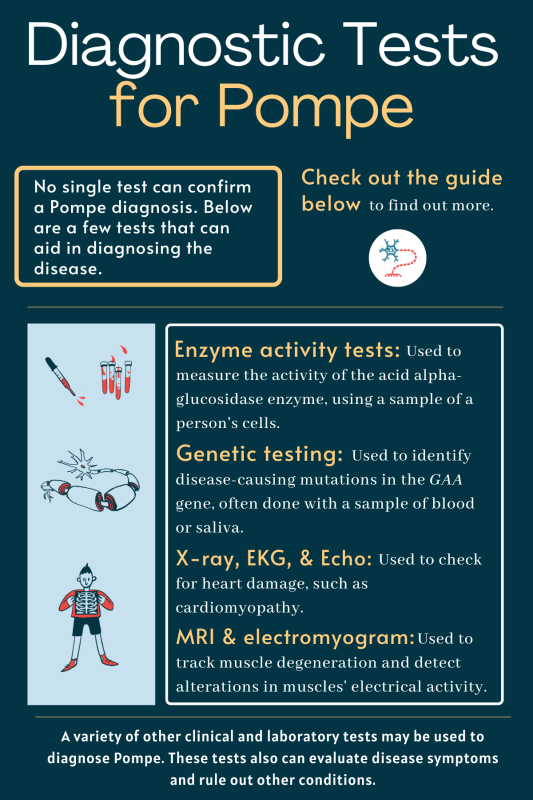FAQs about Pompe disease diagnosis
An enzyme activity test that looks for reduced activity of the acid alpha-glucosidase enzyme is usually the first-line method to definitively diagnose Pompe. Genetic testing to detect disease-causing mutations in the GAA gene also may help confirm the diagnosis. It often is recommended that both enzyme activity and genetic testing be performed to confirm the diagnosis, if possible.
Depending on the disease type, Pompe may cause noticeable abnormalities shortly after birth, or it may not cause any detectable symptoms until later in childhood or adulthood. The median age at diagnosis for children with infantile-onset disease is about 4 months. In late-onset disease, meanwhile, the median age at diagnosis has been reported at 38 years. Most people with Pompe disease experience a substantial delay between the initial onset of symptoms and the eventual diagnosis of the disorder.
The mutations that cause Pompe are inherited from a person’s biological parents; they are present in a developing fetus from the moment of conception. As such, it is possible to do genetic testing to check for Pompe disease before a fetus is born, referred to as prenatal testing.
Yes. Prenatal genetic testing can be done to detect Pompe disease in a developing fetus before birth.
No. Often when people show signs of a disorder affecting their muscles, clinicians will take a muscle biopsy for analysis as part of the early diagnostic workup. While many individuals with Pompe do show characteristic abnormalities on a muscle biopsy, there is a lot of variability in how muscles are affected, even within the same individual. Consequently, false-negative results from muscle biopsy can occur, particularly in individuals with late-onset Pompe disease.
Related Articles

 Fact-checked by
Fact-checked by 






